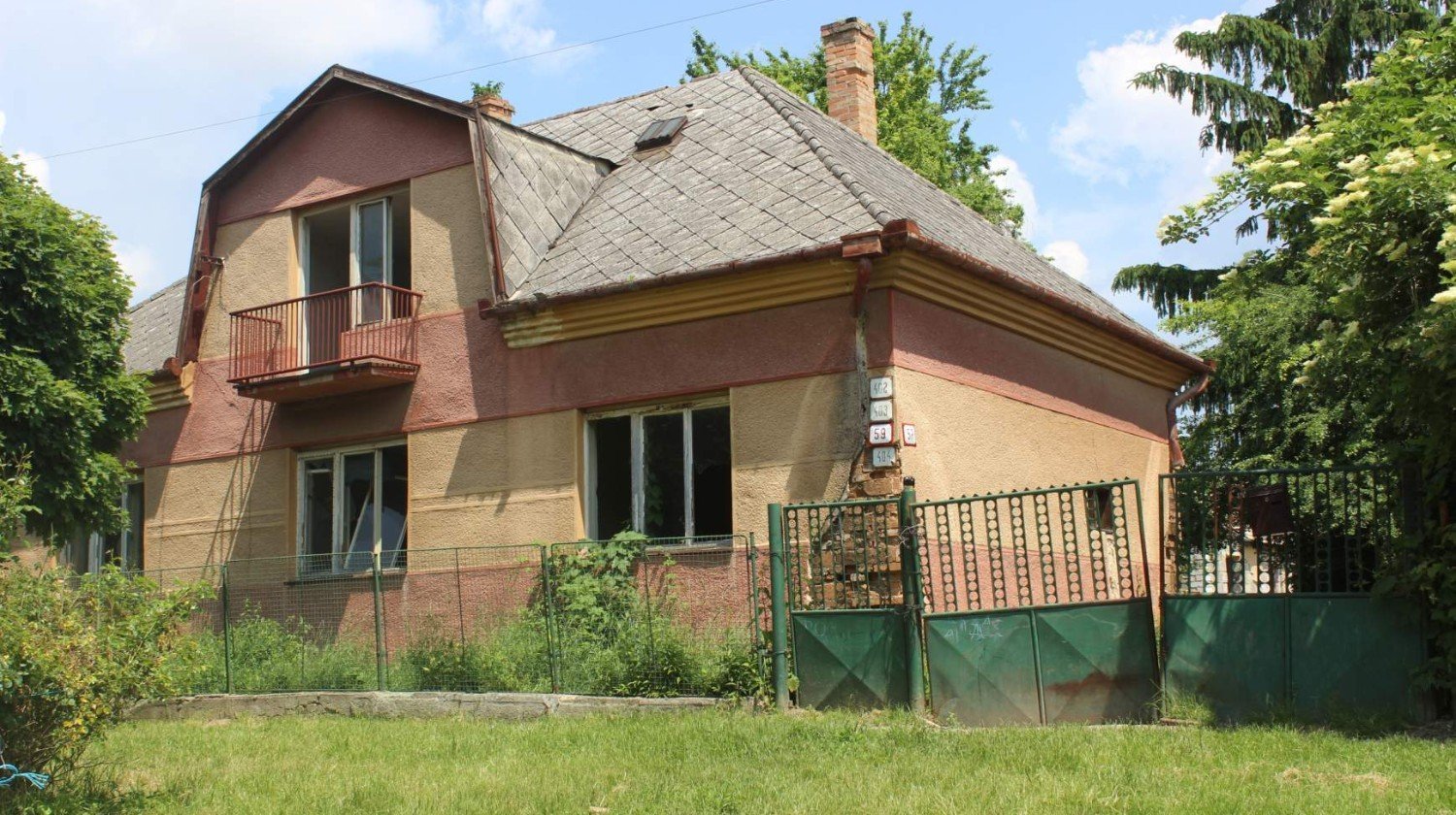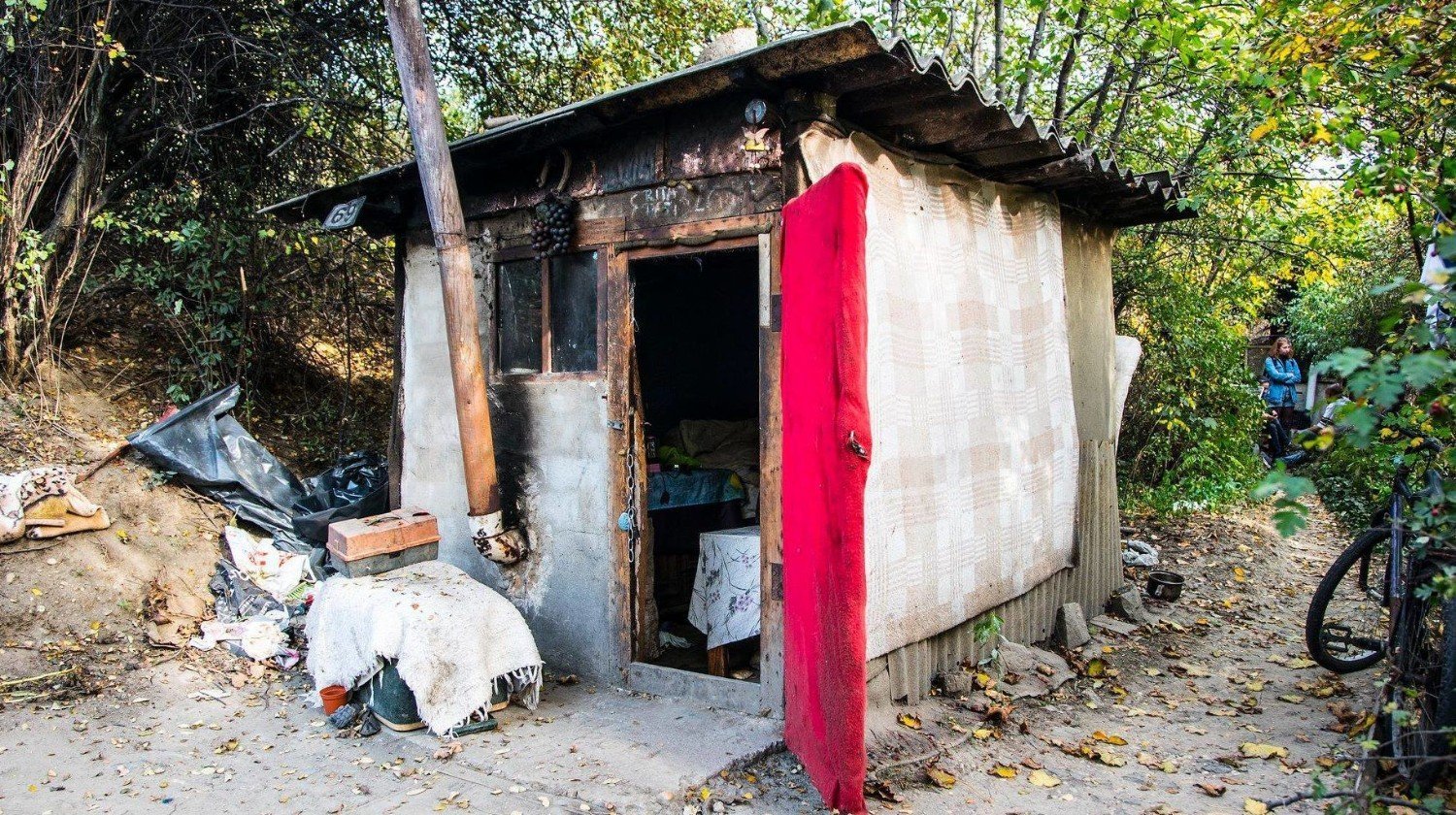Support for families in crisis
Support for families in crisis
What will you fundraise for today?
Original Hungarian text translated into English
Original Hungarian text translated into English
Description
Hajnalda - For a new start
I am Erika Kanyó, the creator of Hajnalda, a committed advocate of self-care and conscious living.
After having had to live through abandonment, homelessness and the consequent loss of my children myself, I have drawn from my own experiences (you can read more about it here: https://www.noklapja.hu/aktualis/2024/05/27/okumenikus-segelyszervezet-riport-sikertortenet/ or watch it here: https://tv2play.hu/tenyek_plusz/baj_van_elvettek_a_gyerekeimet!) I created Hajnalda.
My main mission is to give families in crisis not only a home but also a new chance.
We support people who have lost almost everything - but still have the strength to change. The programme I have created is not just housing assistance. It is a real, human pathway to a life of dignity.
What do we do?
We build homes that are made from recycled materials - at an affordable cost, but in a livable way.
Families not only get it, they participate in creating it: working, learning, growing. The goal is not dependence, but self-reliance.
Why am I asking for your support?
Every donation can change the life of a specific family.
With your help, we can provide new homes, training, mentoring to those who are determined to get back on their feet - but haven't had the chance.
What will the donations go towards?
- Materials for houses to be refurbished (transporting and repairing recycled items)
- Costs of training, teaching materials, mentoring
- Provision of basic household equipment (e.g. heating, bed, stove)
- Equipment to support children's learning
So boiled down Solving the decades-old rural problem project - Purchase of abandoned, foreclosed properties for social use
There is hardly a small town or village that does not have to deal with the annoyance of abandoned houses. Neglected yards are prone to weeds and pests, but empty houses can also be occupied illegally.
The problem of abandoned houses has not only aesthetic but also social and economic implications. Below I will explain in more detail how this issue could be addressed and the consequences of poorly managed abandoned houses.
Impact of the abandoned housing problem
1. Neglected suburbs and aesthetic impact
Empty houses and neglected front yards blight the appearance of a settlement, which diminishes its property market value and reduces the local community's sense of security. The appearance of derelict properties tends to create a negative impression and people are more likely to move away.
2. Increasing pest problems
Empty homes are fast becoming ideal habitats for pests, insects and rodents. Weedy yards and entrances, unmaintained roofs, windows and doors all contribute to the problem. Pests not only pose a threat to the health of residents, but also blight the environment.
3. Illegal move-ins
Abandoned houses can become an attractive target for illegal occupants. They can easily break into unattended properties and live there for long periods, which can cause social tensions. In addition, such residents do not take care of the maintenance of the property, which only worsens its condition.
Possible solutions
1. Social housing and community projects
One of the ways in which the Hajnalda project could be implemented is to turn empty houses into community projects, such as social housing or community centres. Municipalities could also directly take over the renovation and rental of housing to those who really need it.
2. Innovative recycling
Another option that I am considering when launching the Hajnalda project is the innovative reuse of houses, for example by creating community gardens, community workplaces or art studios that can give new functions to unoccupied properties. In this way, the local economy can be boosted and the attractiveness of the settlement can be increased.
3. Community cohesion and activation
In the future, I prefer to think that local communities can take the problem of abandoned houses into their own hands, either through community work, renovation, cleaning, green spaces. They can also support such projects through crowdfunding. However, it is essential to get this off the ground.
My social regeneration programme's fundamental aim is not only to improve the image of localities, but also to offer a real breakthrough for a social group with multiple disadvantages, by supporting housing, work, learning and community integration. In contrast to the traditional aid-based approach, this programme is based on reciprocity and partnership, where participants are not just beneficiaries but active agents in improving their own lives.
1. Providing housing through recycling
- Home renovation is primarily based on the use of recycled building materials, furniture and household items, sourced through donations, demolitions and community collections.
- The renovation of apartments or houses is carried out with the help of volunteers, professionals and the participating families themselves, so that the joint work starts integrating and creating value and community before the move in.
- The aim is not only to create a home, but also to give them a sense of pride and ownership in their new environment.
2. Commitments in return for support
In return for housing, the scheme offers development opportunities and commitments, which may include
- Employment: participants can work in partner organisations, in municipal or non-profit projects, or during renovation works - thus gaining not only income but also professional experience.
- Learning, training: as part of the programme, we provide access to basic and vocational training such as:
- basic financial skills,
- household management,
- vocational training (e.g. tiling, bricklaying, electricity),
- basic digital skills.
- Entrepreneurship support: participants will be given the opportunity to get on their own feet and start a business. This can be facilitated through a mentoring programme, business advice, basic entrepreneurial skills and seed capital.
- The aim is to help formerly vulnerable people become economically independent, active members of the community.
3. Active participation, empowerment
Participants do not just "get" housing, they "work for it " - not only through physical work, but also through their development, learning and community presence.
This is the approach:
- Builds self-esteem,
- supports autonomy,
- increases long-term commitment.
4. The goal: autonomy and long-term change
The aim of the programme is to help families find long-term solutions to their housing problems, not just temporary ones:
- tobe able to live independently,
- have a stable source of income,
- to enter the world of work or become self-employed,
- not return to the crisis situation they were in before.
Housing is therefore a means, not an end - a stepping stone to a dignified, active and independent life.
Concept and delivery method
The programme aims to respond to the intersection of social, environmental and economic challenges through an innovative approach based on the principle of social recycling. Social recycling is a complex solution that combines environmental sustainability, social inclusion and community building.
1. Use of recycled building materials and equipment
- The programme involves the refurbishment of abandoned, dilapidated but salvageable properties - whether they are council, church or private homes.
- We use recycled building materials, furniture, household appliances, which:
- salvaged from demolitions and renovations,
- from demolition, renovation, refurbishment, renovation and refurbishment, and from donations from residents and businesses,
- systematically managed at community collection points.
- The aim is not luxury, but to create safe, dignified and functional housing - with minimal costs and an environmentally conscious approach.
2. Engaging local artisans and community volunteers
- Local, trusted craftsmen will coordinate the construction work, but will be actively involved:
- Volunteers who get involved as a community service, in solidarity or for professional development,
- family members who participate in the programme, who experience the process of building their own home, and in doing so develop a sense of connection and responsibility for their home.
- This joint work builds strong community bonds, social alliances, reduces isolation and sets an example for the local community.
3. Active participation of participants: work, learning, enterprise
- One of the pillars of the programme is that families are not just "recipients", but developing, active people who take action for their own advancement.
- Participants are given the opportunity to:
- get involved in renovation work: painting, demolition, cleaning, furnishing, etc. - even by starting a career,
- learn: basic training (e.g. financial literacy, housekeeping, digital literacy) and vocational training will be provided together with our educational partners,
- start a business: for those with ideas and ambition, mentors and advisors will help them to plan, set up and run a business sustainably.
In this way, the programme does not just 'house', it opens up a pathway - a pathway to economic and social independence.
4. Long-term goal: social and economic reintegration
- The ultimate goal of the programme is lasting change: to ensure that participants do not only find a temporary solution, but also:
- independent housing that is valued and maintained,
- integration into the labour market or to start their own business,
- self-confidence and a predictable future.
- Social reintegration strengthens not only the individual, but also the whole community, as people who were previously marginalised become active, contributing members of society.
Target group - Who does the programme support?
The programme is primarily targeted at individuals and families in crisis who are, for whatever reason, excluded from the safety of their housing and whose current circumstances do not allow them to change their living situation on their own. When selecting the target group, it is important to ensure that the people concerned are not only people in need, but also motivated participants who want to improve.
Primary target groups:
1. Single parents
o In particular those who are raising young children alone and are in crisis due to lack of financial, social or emotional support.
o For them, independent housing and a stable income are key to raising a child and living a decent life.
2. Families and persons who have lost or are at risk of losing their housing
o Those facing eviction, unable to rent, living temporarily with relatives or already threatened with homelessness.
o The programme offers them safe shelter and then a chance to get back on their feet.
3. Young adults leaving the child protection system or public care
o Young people aged 18-24 who enter adult life without support, often without housing, financial and emotional security.
o The programme provides mentoring, training and housing to help them start independent lives.
4. People with multiple disadvantages
o E.g. people with low educational qualifications, long-term unemployed, people with a disability, people belonging to minorities or people leaving an abusive relationship.
o For them, complex support is needed to help them make a new start in society.
Selection criteria and preference
Although need is a prerequisite for all applicants, the programme gives priority to those who:
- are open to employment or professional development,
- are willing to learn - either in basic skills or professional knowledge,
- commit to actively participate in community and regeneration work,
- want to live independent, responsible lives in the long term and take action to achieve this.
This approach will ensure that the resources of the programme go to people who have a real inner motivation for change and who can be re-integrated into the social fabric through community, knowledge and work.
Community embeddedness and selection process
- The programme will work with local social services, NGOs, municipalities to identify the most needy but potentially active participants.
- During the selection process, a personal interview, motivational interviewing and occasionally mock exercises will help to screen the target group to ensure that participation is based on a genuine mutual commitment.
Expected results
The programme's complex approach will deliver concrete, measurable results in the areas of housing, employment, education, community building and the environment. The aim is to empower not only individuals but the whole community in the long term.
1. Improving housing and quality of life
- Every year, dozens of families (around 20-40 people) will have access to a liveable, safe home that meets basic standards of hygiene and comfort.
- Participants' physical and mental well-being improves dramatically: stress is reduced, children's school performance improves and family cohesion increases, while housing stability is maintained.
- Participants also gain experience in household management and property maintenance, which helps them to maintain their homes in the long term.
2. Independence and economic reintegration
- 70-80% of participants will be able to earn a living independently by the end of the programme:
- They get a job, start a business or earn a regular income.
- Many of them enter the formal labour market for the first time.
- The knowledge and contacts gained during the programme will make the results sustainable in the long term.
- Financial stability opens up new opportunities - credit availability, building up reserves, support for children's further education.
3. Environmental impact: recycling and sustainability
- Recycling of building materials and household equipment can significantly reduce waste generation and environmental impacts:
- Tonnes of used building materials, furniture and appliances are recycled every year.
- The principle of "not rubbish, but a resource" is also reinforced in communities.
- Renovation solutions encourage the use of environmentally friendly technologies and materials, promoting a sustainable approach to architecture.
4. Community development and local economic regeneration
- The programme builds strong community ties: participants, craftsmen, volunteers and local residents work together towards a common goal.
- A culture of solidarity and cooperation is spreading in the area, which can strengthen social cohesion in the long term.
- By involving local craftsmen, small entrepreneurs and service providers, a local economic revival can be triggered, which has a multiplier effect:
- New contracts, new job opportunities,
- increased turnover in local shops,
- inspiration for new community initiatives (e.g. joint workshops, social enterprises).
5. Knowledge and model operations
- The knowledge (professional, financial, entrepreneurial) acquired by the participants in the programme can be used in the long term and passed on to others.
- The initiative could serve as a model that could be adapted and developed by municipalities, NGOs or social enterprises in other regions.
Social impact
The programme is not just a housing solution, but a complex social response to the challenges of the 21st century: the housing crisis, social isolation, exclusion from the labour market and lack of sustainability. The aim of the intervention is not just survival, but full social reintegration and restoration of human dignity.
1. Restoring opportunity and dignity
- People participating in the programme, many of whom have been marginalised for a long time, are given a real chance to start afresh.
- A stable home and training opportunities strengthen their self-esteem and restore their belief that they can make a difference in their lives.
- This emotional and psychological support plays a key role in helping participants not only to survive, but also to make real progress and move forward.
2. Community building and social connection
- Through working together, community renewal and a programme based on helping each other, solidarity and social connectedness is developed between participants, volunteers and helpers.
- The programme helps people who were previously isolated to build new social and professional networks that strengthen them to move forward.
- Local communities also benefit: participants become active members of their environment, contributing to social cohesion.
3. Promoting social mobility
- The programme helps to lift disadvantaged people out of the vicious circle of persistent poverty and put them on a sustainable path of social mobility.
- By supporting learning, work and entrepreneurship, social and economic autonomy is increased in the long term and dependency on benefits is reduced.
- For children, this is particularly important, as parents' progress also creates better educational, health and social opportunities for them.
4. Actively combating social exclusion
- The programme makes the invisible visible: it focuses on people who are often neglected by society.
- Through inclusion, empowerment and participation, participants become not only recipients of benefits, but also active, value-creating citizens.
- In the long term, this reduces prejudice, increases social justice and sets an example for other communities.
5. Disseminating an environmentally friendly attitude
- The project will foster an environmentally conscious mindset where recycling, repairing and saving value becomes the norm rather than wastefulness.
- Participants will experience how "excess" can be turned into a viable home, a new start from what is perceived as worn-out - an approach that is socially and ecologically forward-looking.
- Environmental education has a lasting impact not only on the participants, but also on their children and the local community.

There is no description yet.
Create a tracking link to see what impact your share has on this fundraiser. Find out more.
Create a tracking link to see what impact your share has on this fundraiser. Find out more.







